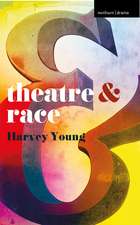How Ethical Systems Change: Eugenics, the Final Solution, Bioethics: Framing 21st Century Social Issues
Autor Sheldon Ekland-Olsonen Limba Engleză Hardback – 18 dec 2017
| Toate formatele și edițiile | Preț | Express |
|---|---|---|
| Paperback (1) | 345.12 lei 6-8 săpt. | |
| Taylor & Francis – 15 dec 2011 | 345.12 lei 6-8 săpt. | |
| Hardback (1) | 1012.34 lei 6-8 săpt. | |
| Taylor & Francis – 18 dec 2017 | 1012.34 lei 6-8 săpt. |
Din seria Framing 21st Century Social Issues
-
 Preț: 293.57 lei
Preț: 293.57 lei - 18%
 Preț: 229.38 lei
Preț: 229.38 lei - 38%
 Preț: 981.61 lei
Preț: 981.61 lei -
 Preț: 339.24 lei
Preț: 339.24 lei -
 Preț: 336.53 lei
Preț: 336.53 lei -
 Preț: 339.83 lei
Preț: 339.83 lei -
 Preț: 336.37 lei
Preț: 336.37 lei - 20%
 Preț: 228.76 lei
Preț: 228.76 lei -
 Preț: 337.29 lei
Preț: 337.29 lei -
 Preț: 337.81 lei
Preț: 337.81 lei - 18%
 Preț: 229.17 lei
Preț: 229.17 lei - 18%
 Preț: 229.77 lei
Preț: 229.77 lei - 47%
 Preț: 142.50 lei
Preț: 142.50 lei -
 Preț: 337.33 lei
Preț: 337.33 lei -
 Preț: 337.50 lei
Preț: 337.50 lei -
 Preț: 345.89 lei
Preț: 345.89 lei - 17%
 Preț: 230.25 lei
Preț: 230.25 lei -
 Preț: 338.73 lei
Preț: 338.73 lei -
 Preț: 345.12 lei
Preț: 345.12 lei -
 Preț: 225.53 lei
Preț: 225.53 lei -
 Preț: 347.80 lei
Preț: 347.80 lei - 21%
 Preț: 222.14 lei
Preț: 222.14 lei - 18%
 Preț: 228.14 lei
Preț: 228.14 lei - 18%
 Preț: 235.21 lei
Preț: 235.21 lei - 18%
 Preț: 997.11 lei
Preț: 997.11 lei - 18%
 Preț: 227.73 lei
Preț: 227.73 lei - 18%
 Preț: 229.38 lei
Preț: 229.38 lei -
 Preț: 338.73 lei
Preț: 338.73 lei -
 Preț: 338.26 lei
Preț: 338.26 lei -
 Preț: 336.96 lei
Preț: 336.96 lei -
 Preț: 343.10 lei
Preț: 343.10 lei - 18%
 Preț: 228.95 lei
Preț: 228.95 lei
Preț: 1012.34 lei
Preț vechi: 1365.16 lei
-26% Nou
Puncte Express: 1519
Preț estimativ în valută:
193.77€ • 210.55$ • 162.87£
193.77€ • 210.55$ • 162.87£
Carte tipărită la comandă
Livrare economică 21 aprilie-05 mai
Preluare comenzi: 021 569.72.76
Specificații
ISBN-13: 9781138468030
ISBN-10: 1138468037
Pagini: 88
Dimensiuni: 178 x 254 mm
Greutate: 0.32 kg
Ediția:1
Editura: Taylor & Francis
Colecția Routledge
Seria Framing 21st Century Social Issues
Locul publicării:Oxford, United Kingdom
ISBN-10: 1138468037
Pagini: 88
Dimensiuni: 178 x 254 mm
Greutate: 0.32 kg
Ediția:1
Editura: Taylor & Francis
Colecția Routledge
Seria Framing 21st Century Social Issues
Locul publicării:Oxford, United Kingdom
Public țintă
UndergraduateCuprins
1. What Lies Ahead 2. An Exclusionary Movement is Born 3. Legal Reform to Eliminate Defectives 4. Redrawing the Boundaries of Protected Life 5. Crystallizing Events and Ethical Principles
Notă biografică
Sheldon Ekland-Olson joined The University of Texas at Austin after completing his graduate work at the University of Washington in Seattle and Yale Law School. He is currently the Bernard and Audre Rapoport Centennial Professor of Liberal Arts. For five years he served as Dean of the College of Liberal Arts and then for eight years as Executive Vice President and Provost of the university. He has authored or co-authored several books and numerous articles on criminal justice, prison reform, and capital punishment. Widely recognized for his commitment to teaching undergraduates, he is the recipient of numerous teaching awards. His current interests are reflected in the book manuscript, Who Lives, Who Dies, Who Decides?
Julie Beicken is a doctoral student in the Department of Sociology at The University of Texas at Austin. Her research interests include political sociology, social movements, eugenics, the Supreme Court, and reproductive technologies. Julie received her Master's degree in 2009 for her thesis, Eugenics: An Elite Social Movement. She has published book reviews in Women's Studies International Forum and Critical Mass.
Descriere
This book offers an explanation of why scale models are important to the design process. Albert Smith takes the reader through the history and significance of models in architecture from the magic of the Egyptian scale model to the present day.Through this description of the relationship between architecture and the scale model, Smith demonstrates the most effective process between concept and 'machine', between the idea and the final building. The great value of this book is to reveal the nature of the scale model and to unlock the tremendous potential of this design tool as a thinking and communicative advice.His chronological analysis goes on from Egypt through Rome to the relationship between the Greek paradigm scale model and then on to Medieval and Renaissance models. It concludes with the models of the Spanish architect Antonio Gaudi, the Russian Constructivists, the American architect Louis Khan and finally looks at the role of scale models in the present day through the work of the Polish/American architect Daniel Libeskind and the American Frank Gehry.











